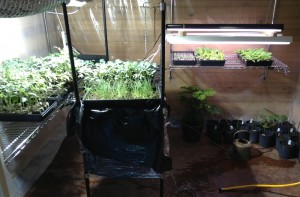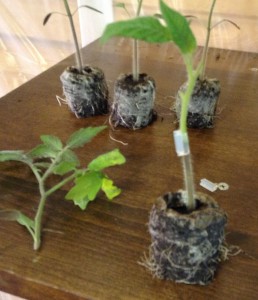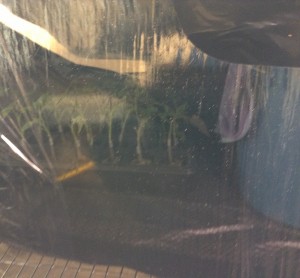After a bit of preparation, it is time to graft tomato plants. The seedlings are about 20 days old and some are already too big to graft.
In addition to tomato seedlings, grafting clips and a razor, a healing chamber is needed. In this picture you can see my seedlings and lighting. Near the middle of this picture is a cart with seedlings on top and a healing chamber built on the lower shelf. The chamber is wrapped in shrink wrap plastic to make a moisture ‘proof’ enclosure. This healing chamber is where the grafted seedlings are placed while the graft heals (3-7 days).

To get a good graft, you first select plants with similar sized stems that will fit into the grafting clip.Brandywine and German Stripped are the fruit varieties I am grafting with Colosus root stock. I had plenty of good stem size matches. The top picture shows 4 Brandywine tomatoes ready for grafting.
To reduce moitsure loss from leaves and to reduce the weight on the graft several leaves are also removed. The result looks very much like mutilation.

Once several grafted seedlings are ready they are placed in a healing chamber.
The chamber is kept at 80 degrees F and at 90% humidity. Too much water flowing through the graft is not good. The high humidity keeps leaf respiration low.
Here are about 30 grafted seedlings in the healing chamber. It is kind of hard to see through the shrink wrap plastic, but you can see the plants inside.



Leave a Reply
You must be logged in to post a comment.